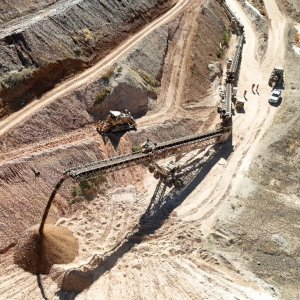
What Is the Potential of Mexico’s Lithium Reserves?
 By Paloma Duran | Journalist and Industry Analyst -
Wed, 06/09/2021 - 12:42
By Paloma Duran | Journalist and Industry Analyst -
Wed, 06/09/2021 - 12:42
Mexico ranks ninth in the world among countries with the largest lithium reserves with 1.7 million tons, according to the US Geological Survey. The country is expected to benefit from lithium demand; however, its reserves are located in hard-to-extract clay deposits, which makes its production expensive and unprofitable.
Bolivia ranks first for having the largest lithium reserves with 21 million tons; followed by Argentina with 17 million tons, Chile with 9 million tons, Australia with 6.3 million tons, China with 4.5 million tons, Congo with 3 million tons, Germany 2.5 million tons and in ninth place, Canada and Mexico with 1.7 million tons each, reported the US Geological Survey.
Lithium has become an alternative resource to how the world uses energy and its demand has been driven primarily by the automotive sector to produce EVs, as the cost of lithium-ion batteries is lower. In addition, lithium-ion batteries are being used to accumulate and restore energy from renewable plants, as they have better characteristics including higher energy density and charge and discharge efficiency, allowing them to perform better.
Lithium is expected to be one of the most demanded resources in the next 50 years and Mexico with its potential reserves could obtain many benefits. A Nature article reported that “demand for automotive applications is estimated to grow by more than 30 percent per year until 2030. Major battery manufacturers are committed to invest more than US$50 billion over the next five years to increase lithium-ion battery production capacity, which is expected to exceed 1.2TWh by 2030.” While analysts differ on their predictions over how fast demand will grow, they all agree that it will increase on a year-on-year basis and it is almost a fact that lithium-ion batteries will dominate the market during the next decade.
To take full advantage of its lithium richness, Mexico needs a comprehensive, internationally-minded industrial policy to promote and increase its lithium value chain. Currently, Mexico already has a comparative advantage to other countries, like Bolivia, Chile or Argentina. It is the fifth-largest auto parts producer in the world and it is expected that Mexican factories will soon begin assembling EVs in mass quantities.
However, there are several problems that hamper the development of the lithium industry. In Mexico, there are concessions to exploit lithium in 94,740 ha, others are in the process of obtaining permits that would represent another 527,000 ha of the national territory, according to data from the Comprehensive Mining Economy System (SINEM). Current concessions were granted by previous governments, while permits for new concessions are suspended due to President López Obrador's policy of not granting concessions.
Another problem is that the country’s reserves are found in hard-to-extract clay deposits, which are very expensive and difficult to extract. Fernando Alanis, President of CAMIMEX, explained that Mexico’s lithium has a concentration of only 0.001 percent per ton and, to bring it to a percentage for battery (30 percent), the cost and energy used are very high.
Alanis explained that there are different types of lithium deposits: rock, salt, and clay. Rock deposits generally found in Australia and the US account for 26 percent of global production and generally contain 5 percent lithium for every ton of rock. Salt deposits are found mainly in Argentina, Chile and Bolivia and represent 74 percent of world production. For each ton extracted, the lithium concentration is 0.001 percent. Finally, the clay deposits only have .001 lithium per ton, their extraction is very expensive and consumes a lot of energy. As a result, they are not profitable explorations. This last type of deposit is the one that Mexico has in Sonora and Zacatecas.
Considering these figures, there are strong challenges for the development of the lithium industry in Mexico. However, one challenge disappeared last week when the government shifted its stance towards the private sector and investors. The Mexican authorities announced that they will no longer seek to nationalize the country's production, since they understand that they need the private sector to be able to boost the lithium industry. However, a bill to regulate the market will be presented to Congress in September.
Many key mining leaders have asked the government not to focus on just one resource, as Mexico has better and more opportunities with other minerals. "Is the future of Mexico’s mining in lithium? Not quite. . The future of Mexico´s mining industry lies in supporting all the research that is required in all the metals that the country has,” said Sergio Almazán, president of the Mining Association Engineers, Metallurgists and Geologists of Mexico.
















